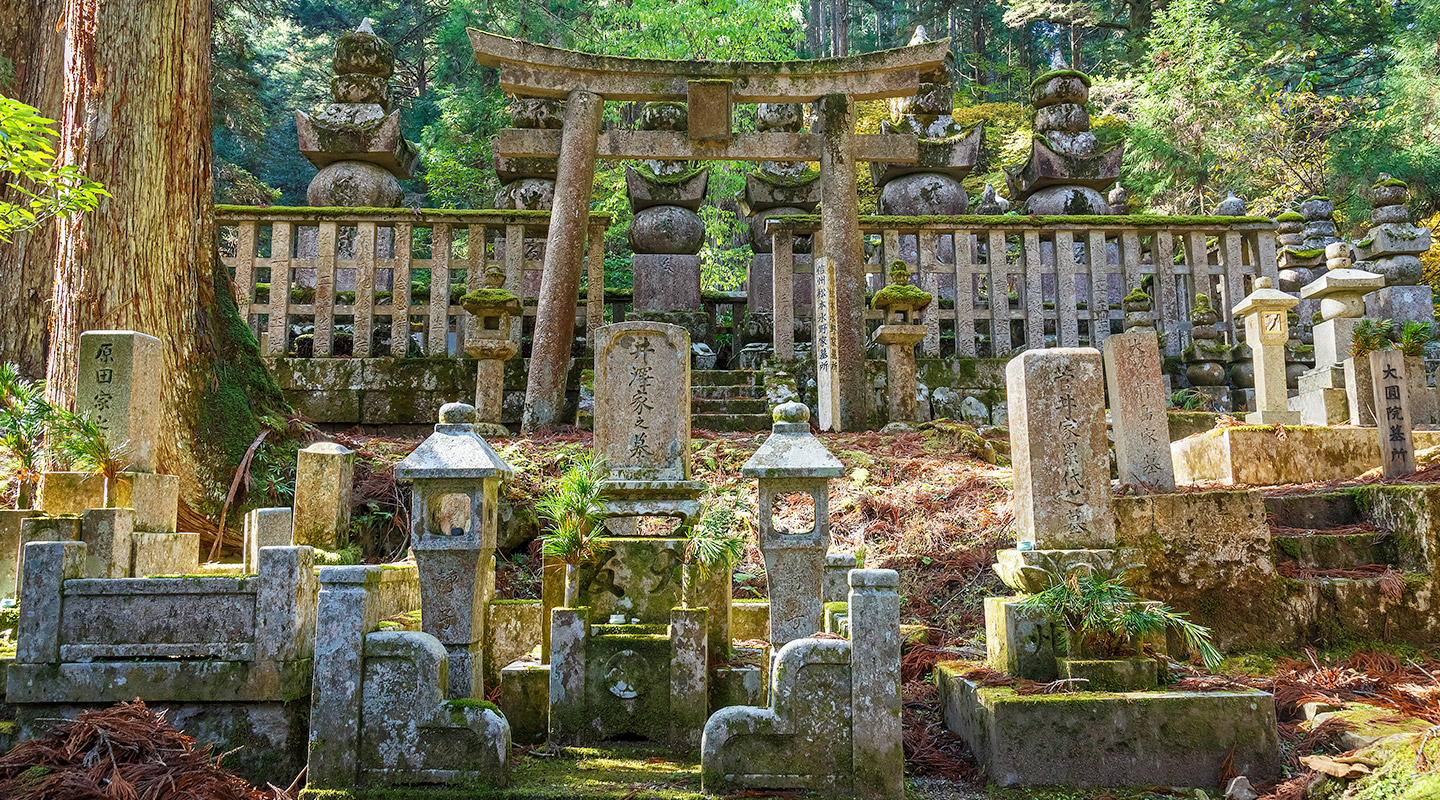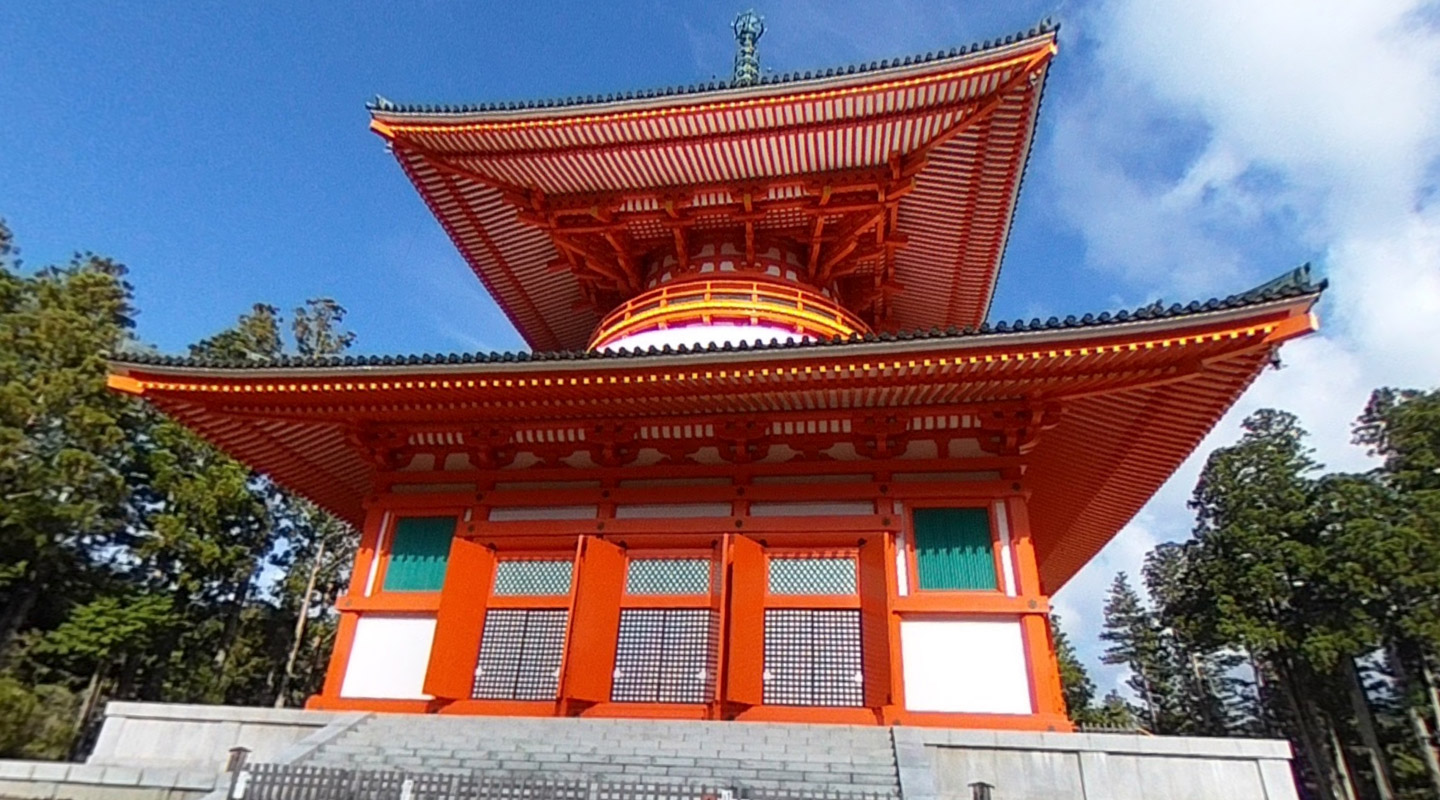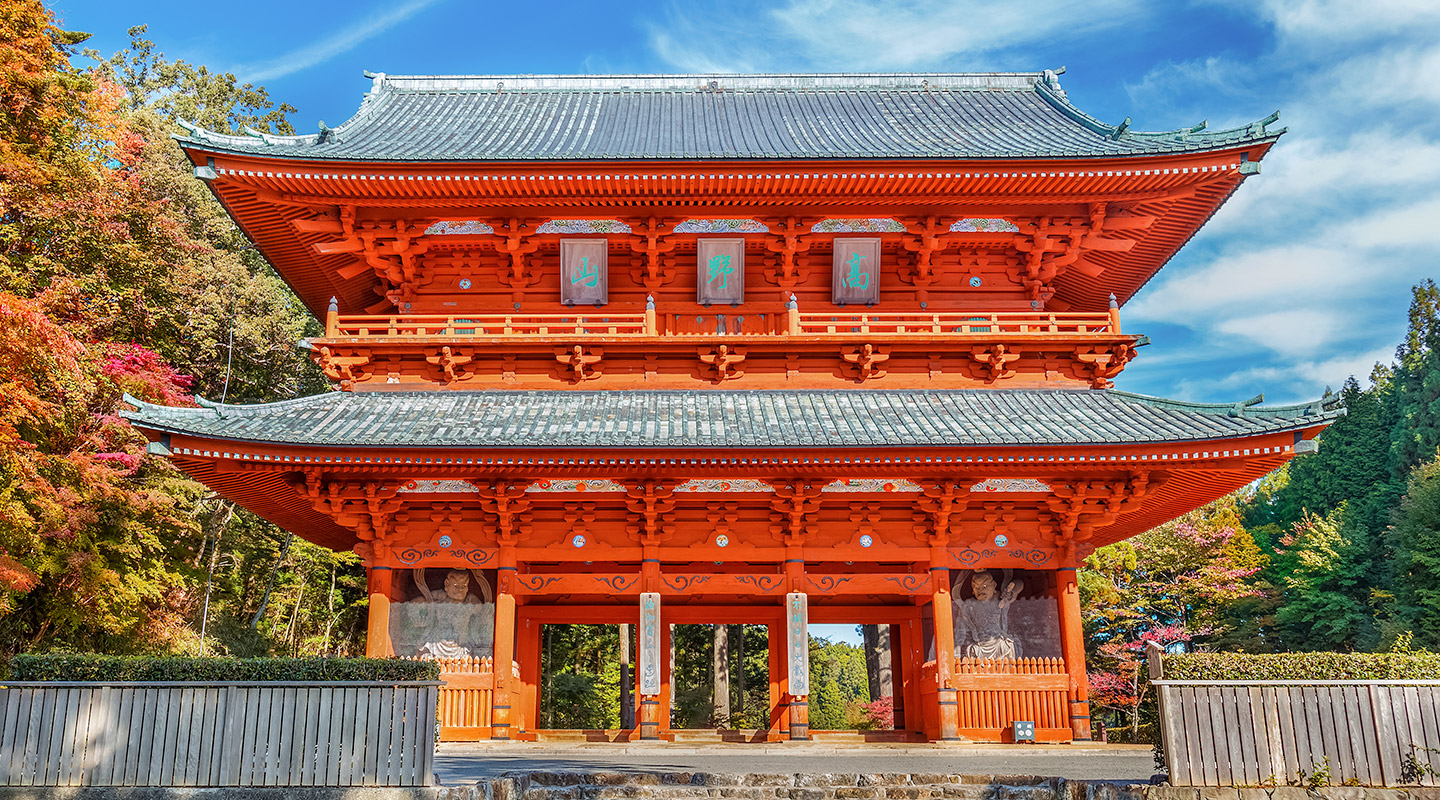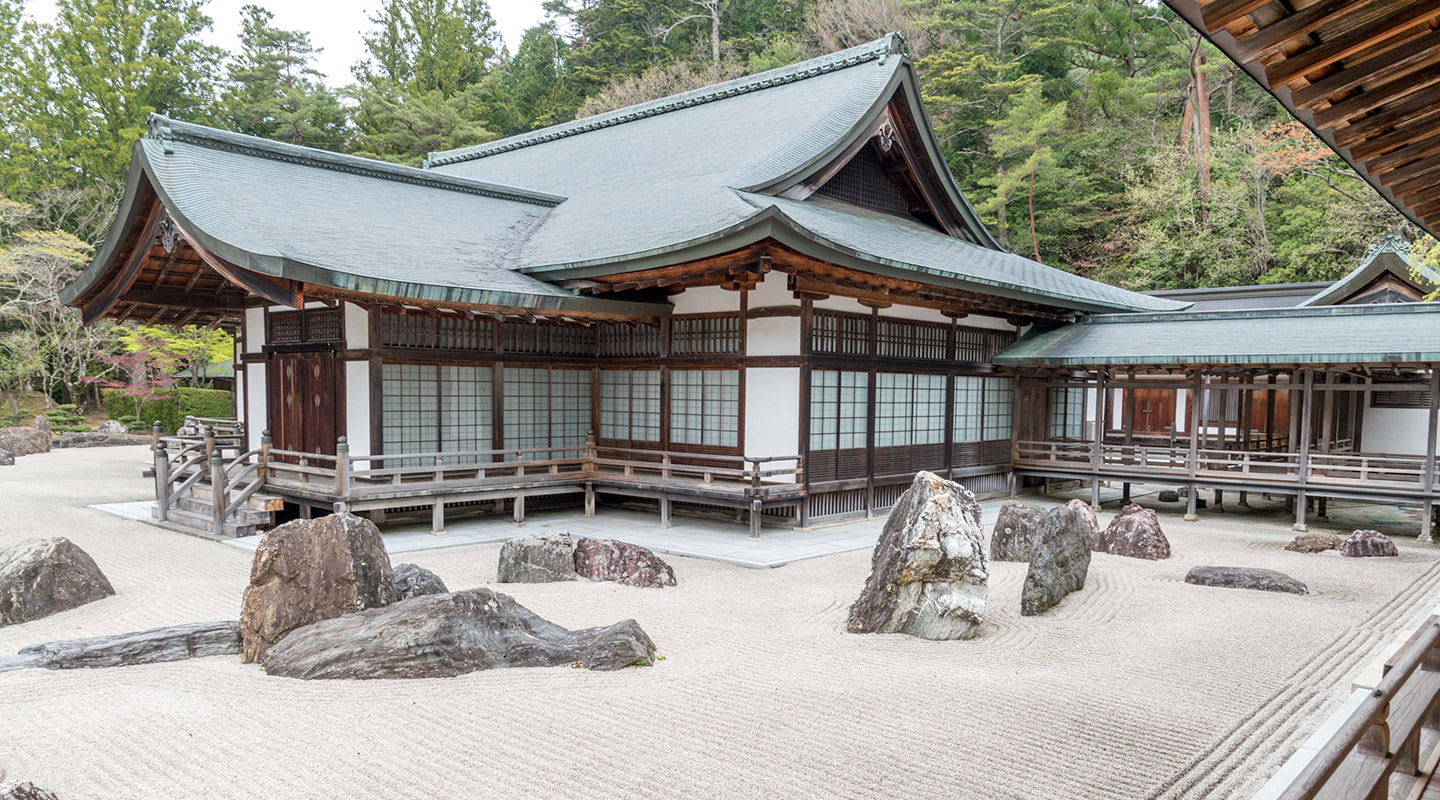Enveloped in mystical forests and echoing with centuries-old chants, Mount Koya (Koyasan) is the heart of Shingon Buddhism in Japan. Located in the wilderness of Wakayama Prefecture, a day trip to this UNESCO World Heritage site from Osaka promises an experience of serenity, spirituality, and natural splendor. Here’s your guide to navigating this revered mountain.
Getting to Mount Koya from Osaka:
By Train:
Begin your spiritual journey on the rails. The Nankai Electric Railway from Namba Station in Osaka to Gokurakubashi Station at the base of Mount Koya is your best bet. From there, take the Koyasan Cable Car uphill. Once you’re atop, buses ferry visitors to various parts of the town.
Duration: About 1.5 to 2 hours.
Cost: Consider the Koyasan World Heritage Ticket. This all-inclusive pass (around ¥3,300) covers your round trip, cable car rides, and buses on Koyasan. More Information.
Summary based on multiple reviews from travelers who visited Nankai Rinkan Bus Koyasan Office:
- Bus Service
- Expensive ticket price compared to other buses in Japan.
- Infrequency of bus operations, which can result in missed opportunities to explore more.
- Bus routes to major tourist spots including Koyasan and Kondo-ji Temple.
- Poor customer service and unsatisfactory experience with bus drivers.
- Misleading stop information displayed on bus screen.
- Walking
- Walking around Koya city is possible and doable due to the small size and proximity of attraction sites.
- The path from the Gokurakubashi station to the Koya-san’s precinct is a tough uphill hike, but can be considered to save on fare if tourists are physically capable and time permits.
- Day Pass
- Day pass ticket allows unlimited bus rides which may be more cost-effective if you intend to travel more than 3 times in a day.
- The day pass tickets also come with discount coupons for restaurants, souvenir shops, and entrance fees to tourist spots like the Kondo-ji Temple.
- Recommendations
- The ‘ride all you can’ ticket offered by Nankai Electric Railway which includes train and bus rides can be a cheaper option for tourists coming from Namba in Osaka.
- It is recommended to purchase tickets in advance due to possible high congestion in ticketing areas.
Morning Contemplations:
1. Okunoin Cemetery

Begin your Koyasan journey amidst the towering cedars of Okunoin, Japan’s largest cemetery. This ethereal resting place houses the mausoleum of Kobo Daishi, the founder of Shingon Buddhism. As you tread the two-kilometer path, you’re not just walking amidst graves but narratives of faith spanning over a millennium.
Summary based on multiple reviews from travelers who visited Okunoin Cemetery:
- Cemetery Overview
- Enormous and spiritually significant cemetery.
- Constructed with the intention to commune with nature.
- Not initially built as a tourist destination, but it’s worth visiting.
- Location amidst a centuries-old forest.
- Graveyard that, according to Shingon Esoteric Buddhists, houses Kukai in deep meditation.
- Graves and Tombs
- Preserved graves of known and corporate figures, easily recognized through brand names.
- Astonishing and historically significant moss-covered tombs and statues.
- Hideyoshi’s memorial site.
- Natural Elements
- Location within a forest comprising towering, ancient trees aged between 200-600 years.
- Presence of untouched and old statues along the small dirt paths that branch off the main trail.
- Scenic beauty heightened by tall green trees surrounding the place.
- Rituals and Religious Elements
- Authentic temple in Japan where monks live, conduct rituals, and prayers.
- Presence of a tower of Buddhas accumulated over the centuries.
- Unique Features
- At night, the cemetery is illuminated by stone lanterns.
- Presence of ‘the house of the lanterns’.
- Visitor Recommendations
- Best visited during dusk for better peace, magic, and spiritual energy.
- Visitor recommends staying at least 2 days and visiting during both day and night.
2. Torodo Hall (Lantern Hall)
Situated near Kobo Daishi’s mausoleum, this hall gleams with more than 11,000 lanterns. A sublime sight, these lanterns are believed to have been continuously lit for over a thousand years.
Summary based on multiple reviews from travelers who visited Torodo Hall (Lantern Hall):
- Main Attractions:
- The main hall of worship, Toro-do, known for its numerous lanterns.
- The intriguing walk through the cemetery.
- The unique fusion of nature and temple architecture.
- The basement and other building full of lanterns, a distinctive sight not commonly seen in Japan.
- Stunning night walk through the woods/cemetery offering a unique experience.
- Rules and Regulations:
- No photography is allowed inside the hall.
- The place closes at 5pm during the summer.
- Interesting Facts:
- There are 11,000 lanterns in the hall, most of which are donated by worshippers of Kobo Daishi. These lanterns are kept lit all the time.
- The hall’s basement contains 50,000 statues donated on the occasion of Kobo Daishi’s entrance into eternal meditation.
- Many Buddha statues and many trees make for a tranquil environment.
- Additional Attractions:
- The meiroku stone in a small temple after you cross Gobyono bridge offers a unique experience when lifted.
- Walking from the city center through the sanctuary to the temple is highly recommended for its magical experience.
Mid-day Meditations:
3. Kongobuji Temple

As the head temple of Shingon Buddhism, Kongobuji boasts elegant sliding doors adorned with intricate paintings and the largest rock garden in Japan, called Banryutei. The temple exudes an air of solemnity and beauty.
Summary based on multiple reviews from travelers who visited Kongobuji Temple:
- Visitation Timings
- The temple tends to be less crowded during weekdays so you can enjoy a peaceful and serene atmosphere.
- Photography
- Be aware that though the place has great cultural heritage value, it may not be the best spot for photography.
- Interior artwork cannot be photographed.
- Entrance Fee
- The fee for entrance is 500 yen.
- Cultural and Historical Significance
- The temple is regarded as the ecclesiastical head of Shingon Buddhism.
- You can learn about Shingon Buddhism’s origin and its spread by Kukai.
- Several historical events have taken place here.
- The temple’s name interprets as Diamond Mountain Peak in Buddhism.
- Architectural Features
- It contains a well-preserved kitchen, decorated doors, and a rock garden among its architectural features.
- The temple features traditional Japanese architecture and offers a unique insight into Japan’s rich cultural heritage.
- Artworks
- Pay attention to the fusuma with various and sophisticated paintings inside the building.
- The Rock Garden (Banryūtei)
- The Banryūtei rock garden is a must-see feature of the temple. Its arrangement of granite stones takes the shape of 2 dragons making it a unique attraction.
- During autumn, the rock garden assumes greater beauty.
- Shoe Etiquettes
- Remember to remove your shoes when entering the temples.
- Souvenirs and Blessings
- You can purchase tokens for luck and request monks to sign your book at the temples.
Lunch Break: Satiate your appetite with Shojin Ryori, the traditional Buddhist vegetarian cuisine. This meal is not just about taste; it’s an art, a ritual, and an insight into the monks’ lifestyle.
Afternoon Awakenings:
4. Kongobuji Danjo Garan Temple and Reihokan Museum

Explore these spots for a deeper understanding of the region’s religious artifacts and treasures. The museum houses scriptures, liturgical implements, and intricately crafted statues.
Summary based on multiple reviews from travelers who visited Kongobuji Danjo Garan Temple:
- Temples and shrines
- Large complex with numerous temples
- English descriptions on signs near each temple
- Detailed decorations and carvings on the wooden temples
- Bonsho, or the bell that rings in the wind at the top of the pagoda
- Landscape and Surroundings
- Scenic views and beautiful surroundings similar to a giant bonsai garden
- Atmosphere is serene, especially with heavy mist
- Large and intriguing cemetery behind the temple and town
- Accessibility and Costs
- Easily reachable from Osaka with a two hour one-way trip
- Nankai Line day pass available for foreigners
- Main landing point of tourist buses
- Local Culture and Traditions
- White bell tower and great pagoda as key highlights
- Local food such as Kochi available from vendors
- Insight into Japanese history and traditions
- Tourist Experience
- Can be relatively deserted during off-peak seasons
- Peaceful and magical ambiance
- Open for early morning and night-time visits for different perspectives and views
- Much to see and explore, making it a rewarding experience
5. Daimon Gate

Standing guard at the entrance to Koyasan, this massive gate sets the spiritual ambiance of the place. It’s an iconic spot, symbolizing a gateway from the mortal realm to a sacred space.
Summary based on multiple reviews from travelers who visited the Daimon Gate:
- Size and Structure
- The gate is very grand and its huge size often doesn’t translate well into photos. It stands at an impressive 25 meters tall and is an iconic landmark.
- Despite its size and importance, it is one of the least visited places in Koyodan.
- Its structure is beautifully impressive and magnificent, providing a great start or finish point for your pilgrim route hike.
- There are fewer people around, offering chances to take good photos with no people.
- Accessibility
- Easily accessible via a short walk from the city centre; it is also accessible by city bus when staying at Koyasan.
- There’s a small trail to go to the other side (Nyonindo) if you have time.
- Visitors who wish to see it can either trek there or take a bus.
- Scenic Views
- Good views across the road from the gate and the scenery across from it is very nice at sunset.
- It is situated in a very beautiful location, with lovely views of the valley.
- There is a wonderful view across the street, and the autumn leaves add extra attractiveness to the place.
- Visitor Experience
- Visitors generally do not spend more than 10-15 minutes at the gate, but it is a must-visit in Koyasan.
- There is a bathroom nearby for visitors’ convenience.
- Given the quiet times in Japan, there are not many tourists from overseas, making the place almost empty at times.
- It is lit up at night, offering a different experience.
Evening Reflections:
6. Participate in Evening Prayers
If time permits, join the monks during their evening prayer sessions in one of the temples. It’s a moving, rhythmic ritual, one that gives a genuine feel of Mount Koya’s spiritual core.
Key Notes for Your Day Trip to Mount Koya from Osaka:
- Attire: Respect is key. When visiting religious spots, it’s advisable to wear modest clothing, covering shoulders and knees.
- Footwear: With quite a bit of walking involved, comfortable shoes are essential. The terrain is a mix of paved paths and natural trails.
- Weather: Mount Koya can be significantly cooler than Osaka, especially in the evenings. Carrying a light jacket, even in summer, is wise. Winters can see snowfall, making the landscape dreamily beautiful.
- Language: Major temples often offer pamphlets in English. However, having a translation app or basic Japanese phrases jotted down can enhance your interaction with locals.
- Connectivity: While major temples and accommodations have Wi-Fi, it’s limited in other areas. Consider this a chance to unplug and connect with the surroundings.
Departure from Koyasan: The last cable car down the mountain typically departs around 9 PM. Ensure you’re at the station with ample time to spare, factoring in the bus ride from your last stop.
A day trip to Mount Koya is not just about sightseeing; it’s about experiencing a slice of Japan’s spiritual soul. As you descend back to Osaka, the tranquillity of the mountain, the chants of the monks, and the stories whispered by ancient cedars promise to leave an indelible mark on your traveler’s heart. Safe and serene journeys!


